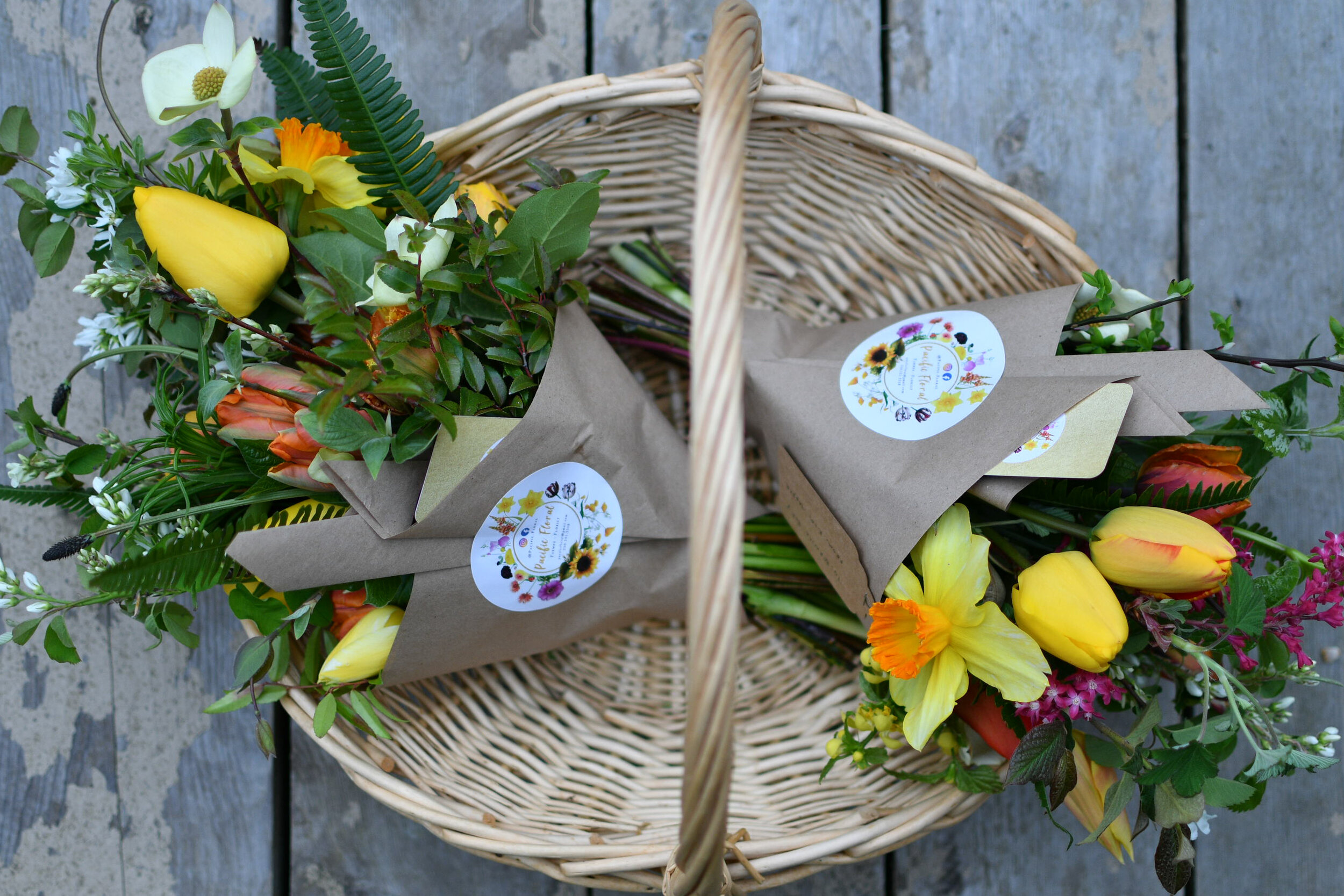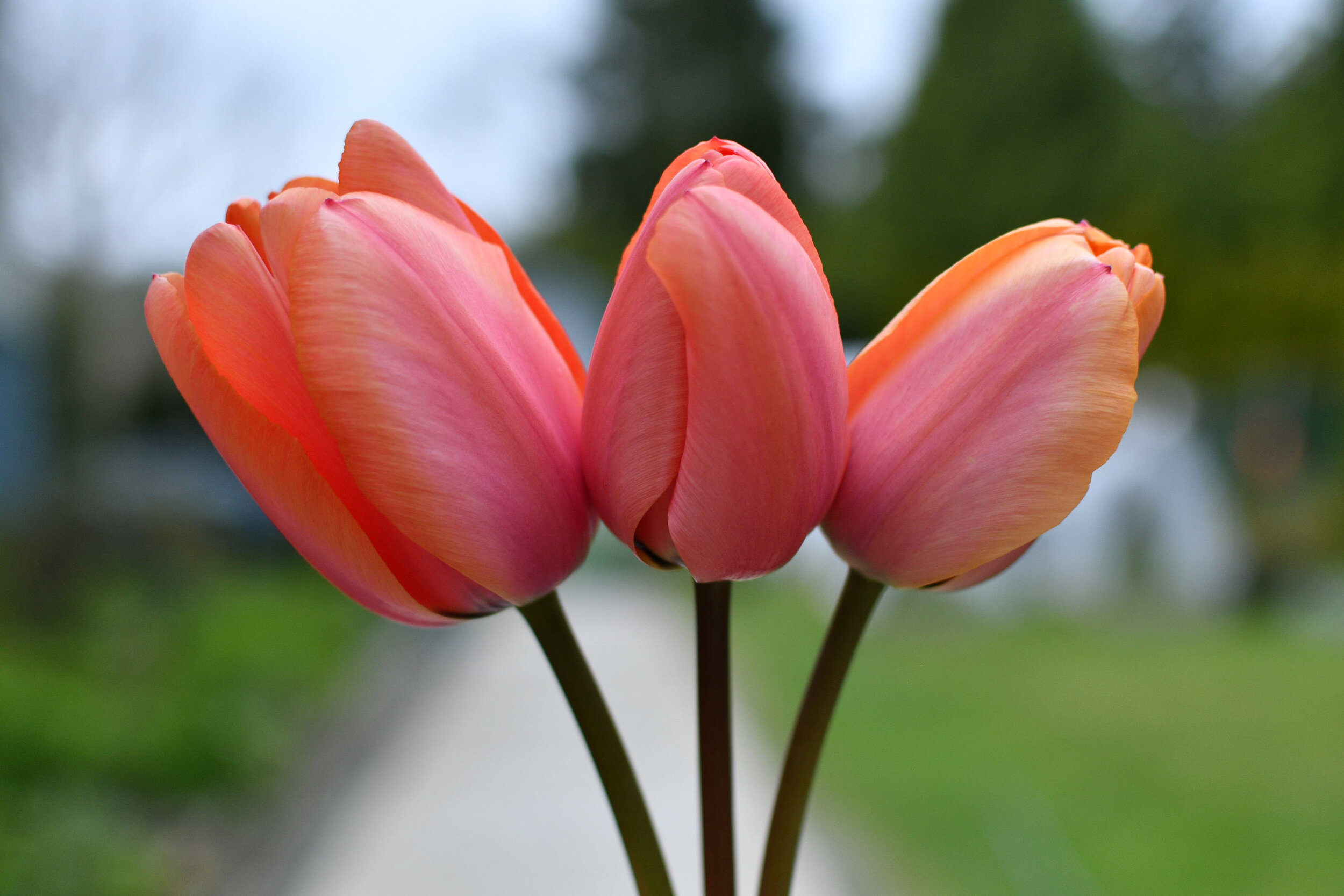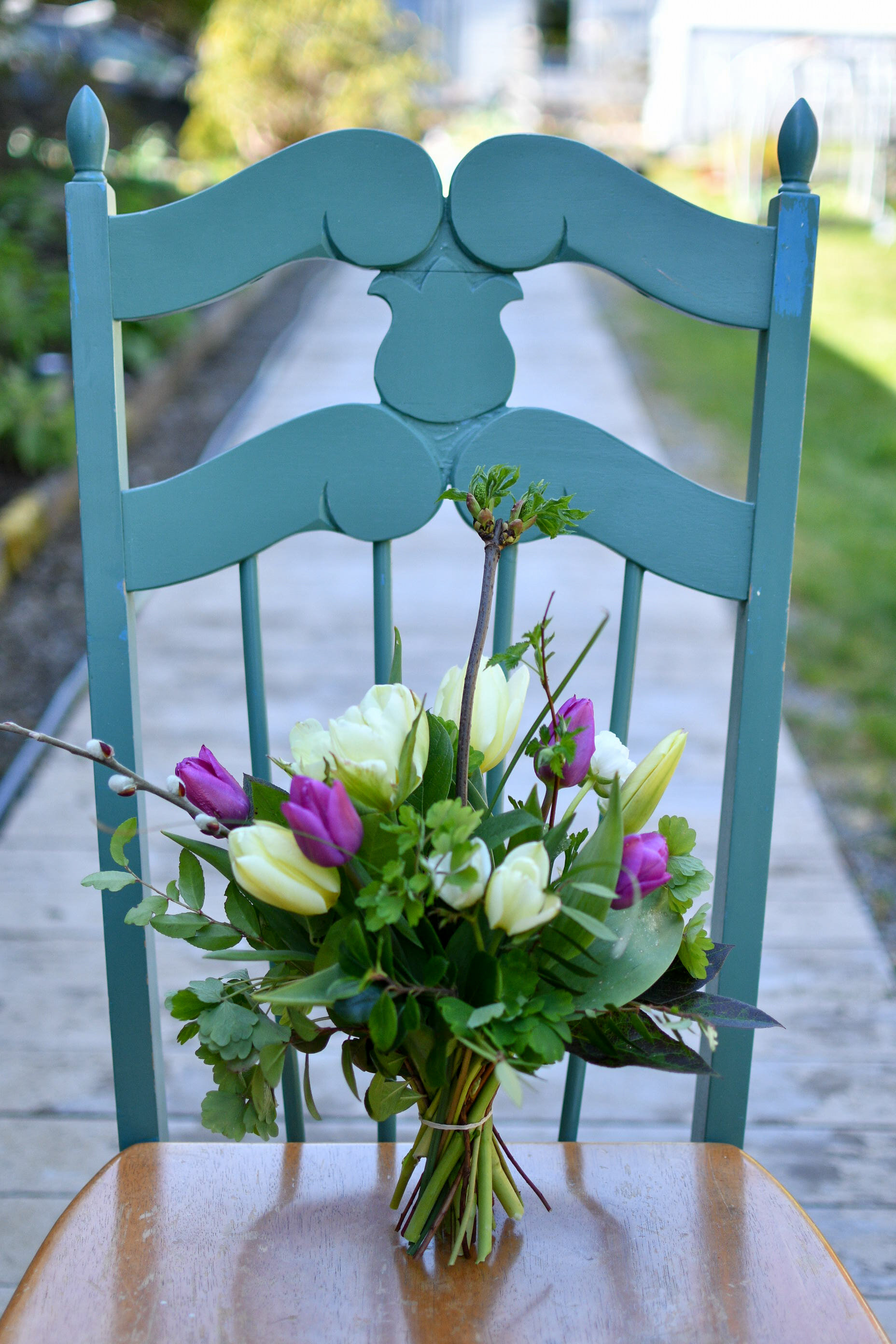Growing and Harvesting Tulips | Tulips on Pacific Floral Farm
Have you ever marvelled at a rainbow of tulips in a field, either in person or from a picture? The tulip is such a beautiful spring flower with so many variations and colours. The tulip is currently the third most popular flower in the world, although this flower has long been associated with Holland, the flower is actually native to Turkey and central Asia. Blooming natively in areas that covered southern Europe to Central Asia, it was introduced to eastern Europe by imports from the region that is now known as Turkey. After being introduced to the Netherlands it became a coveted prize within the Netherlands and a status symbol to the Dutch because it was far more vibrant in colour than the flowers native to this part of the world. "Tulipmania" as it became known, was the world's first financial-economic bubble. These flowers became so valuable that they could be used to buy a house. Tulips sold for over 4000 florins (the currency of the Netherlands at the time) Producing 3 billion bulbs yearly and exported around the world, the Netherlands is the worlds leading producer of tulips.
With over 150 species of Tulips and over 3,000 naturally occurring and genetically cultivated varieties, this allows for so much variety including different colours, heights, scents, and petal styles. Coming in a wide variety of vibrant colours such as red, yellow, orange, purple, pink and bi-colours, they can be found in every colour except for true blue.
PERENNIAL TULIPS :
While these flowers are perennials, some of the hybrids will look amazing in the first year, but they lose their vigour in the second year. Although you can try to regrow hybrid tulips for a second year, you will most likely get a weak stem and small flower. For this reason, many home growers and flower farmers choose to pull the bulb out when harvesting the flowers or after they have faded in the garden. Treating them like an annual, and replanting fresh bulbs for the following year. Some Species tulips though are good at perennializing. Although they may not be as showy as some of the hybrids, their ability to do this makes them a good investment for the gardener who wants to add them to their perennial beds, for year after year spring colour.
SELECTING BULBS :
It is important when selecting bulbs in person to look for ones that are firm and unblemished. If bulbs are soft, damaged, rotting or shrivelled avoid these as they are unlikely to grow. Tulip bulbs will not last out of the ground so it is important to plant them within a reasonable amount of time from when you receive them, try to plant within a couple of weeks if possible.
WHEN TO PLANT :
Tulip bulbs are planted in the fall. Here in the Vancouver island in the PNW, we plant in October or November, but this depends on your region. You want to plant the tulips while the ground is still not frozen, so planting can range from September - November. Where ever you live try to plant when the temperatures are cool, just before freezing. Warm soil temperatures create an environment for many diseases that can attack bulbs. In hotter places that do not experience below-freezing temperatures, you will need to either Trick the bubs by pre-chilling in the refrigerator or buy pre-chilled bulbs.
HOW TO PLANT :
When planting tulips place the pointed end up 6-8 inches deep. A depth of three times the diameter of the bulb is a good rule to go by. Planting tulips deeper created a thicker stem and prevents them from falling over. In my region, we also have to watch out for pesky stellar jays. If bulbs are not planted deep enough, they will dig down and pull them up. I sometimes find random bulbs around my yard that they have pulled out. Since planting deeper though this has not happened. Add bulb fertilizer and compost to the bottom of the planting hole. If planting tulips in a bed for landscaping plant them 2-3 inches apart. If you are growing them for cut flower production you can plant them as close as an inch apart. Visualize an egg carton but instead of eggs you have tulip bulbs, this is a good reference for how close you can go. Avoid planting tulips alone, this is one flower that looks better and created a bigger visual impact in groups or clusters of tulips. If planting a lot you can dig a trench or remove the soil 8 inches down where you are going to plant. Place your fertilizer and compost on the bottom and then add the bulbs. Cover up with the soil you removed. Tulips require ground that drains well so that they do not rot over winter.
TULIP DISEASES :
several diseases can occur on tulips. Some destroy the flower and others can just create ugly spots on the leaves and petals.
"Botrytis Tulipae" or "Tulip fire" is most common and causes brown flecks in the leaves and often turns the plant grey with mould. The buds will often rot. The leaves can also often be seen a twisted and distorted. Flowers with botrytis will become limp and often not open. This is a very common disease amongst tulips, particularly the hybrid types are most affected. This disease only affects tulips. Once you notice this on the plants the Bulbs will then have been affected. The whole plant and bulb should be removed and burned so that the disease does not persist being passed on to the next generation.
"Grey bulb rot" can affect bulbs if they are in waterlogged ground for too long. often the bulb becomes to soggy to open and allow the plant to rise up above the ground, in essence drowning the tulips. If the plant does emerge from the ground they may become distorted looking in a similar way to tulip fire.
"Crown rot " although rare, causes the bulb and flower to die under the ground. Bulbs with this disease should be dug up and burned as it can transfer to new bulbs .
PREVENTING TULIP DISEASE :
To prevent disease in your tulip beds, either plant disease-resistant perennial tulips such as the "Darwin" series to get years of colour. check your bulbs when removing them at the end of the season, remove infected ones. If you wish to plant Hybrid tulips pull them out each year and do not save the bulbs, you might get lucky and get a second year of blooms but they are usualy smaller flowers and weaker stems. If planting for cut flower production, rotate your tulip beds not planing tulips back in the same bed for at least 3 years, 5 years if the disease is grey bulb rot. If there were any diseases in this bed it should be gone by the time you plant there again.
HARVESTING TULIPS :
When harvesting tulips for cur flower production generally the tulip is removed when the bud is just starting to colour up and with the bulb attached. This allows the flower to be stored for a longer period in a crate placed in a cooler. once it is taken out of the cooler the bulb is removed.
Keep in mind when Tulips are placed in water after being cut they will continue to grow, often 3-4 more inches in the vase.
When Harvesting tulips at the right time their vase life is 7-10 days. They should always be harvested before the bud is fully open for maximum vase life. Cut the stems on an angle to allow the flower to rehydrate well. Change the water daily and freshen up the stems every other day by snipping the bottom 1/2 inch off to help with maximizing their vase life and getting the most enjoyment out of these beautiful flowers.
If you enjoyed this blog post about Tulips, stay connected with us through our bi-weekly newsletter for more gardening tips and tricks ! Sign up with the subscribe forum below!
Please feel free to share this blog article with any of your gardener or flower loving friends!
For more daily photos and updates about the farm, you can connect with me on social media through:
Instagram @pacific.Floral
Facebook : www.facebook.com/pacific.floral.farm


















